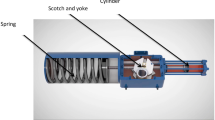Abstract
Over the last several years, the forensic community has experienced an increase in the number of fires which have been attributed to ventilation fans. These failures have been anecdotally observed in Jakel motors, specifically model numbers J239-050-5138 and J238-050-5494, manufactured between 2000 and 2003. While there have been a number of variations to motors within exhaust fans over the preceding decades, including different winding size, winding metal, and thermal cut-off (TCO) manufacturers, two design implementations have led to the higher incidents of failure. The first design change is the implementation of 27 American Wire Gauge aluminum winding (magnet) wire. The second, and most important, is the implementation of the Tamura Thermal Device Corporation (TAM) TCO to replace the Elmwood Sensor/Honeywell (Elsen) TCO. Through investigations and testing, the Tamura TCO has been found to be unreliable at opening the circuit within the motor when exposed to temperatures above its specified cut-off temperature (136°C). Thermal testing of a Tamura TCO showed that even when exposed to temperatures as high as 260°C, the flux of the fusible thermal link is incapable of breaking down the oxides created by the metal alloy. The hypothesized failure mechanism for the Tamura TCO include increased exposure to high temperatures during fan operation and/or air infiltration from cracks in the epoxy sealant due to improper installation, along with the corrosive effects of the chlorinated flux. This work presents case studies, experimentation, and analysis of the failure mechanisms related to fires associated with the aforementioned motors.
















Similar content being viewed by others
References
Shanley J (2010) Forensic failure analysis and fire ignition sequence of fractional horsepower, shaded pole motors used in appliances. International Symposium of Fire Investigation Science and Technology.
NFPA 921 (2014) Guide for fire and explosion investigation.
Babrauskas V (2003) Ignition handbook: principles and applications to fire safety engineering, fire investigation, risk management and Forensic Science. Issaquah: Fire Science Publishers.
DeHaan JD (2007) Kirk’s Fire Investigation, 6th edn. Englewood Cliffs: Brady Fire, Julie Levin Alexander-Pearson Education, Inc.
Pitts WM (2007) Ignition of cellulosic fuels by heated and radiative surfaces. NIST Technical Paper 1481.
Lee D, Trotta A, King W (2000) New technology for preventing residential electrical fires: arc-fault circuit interrupters (AFCIs), Fire Technology 36(3):145–162.
Underwriters Laboratories Inc. (1999) UL Standard for Safety for Electric Fans, UL 507 9th edn.
Underwriters Laboratories Inc. (1996) UL Standard for Safety for Electric Oil Heaters, UL 574 7th edn.
Underwriters Laboratories Inc. (1994) UL Standard for Safety for Electric Motors, UL 1004 5th edn.
Domininghaus H (1993) Plastics for engineers: materials, applications, processes. Munich: Hanser Gardener Publications.
AWG Cable Sizes Aluminum Wire. http://www.interfacebus.com/Aluminum_Wire_AWG_Size.html. January 6, 2014
Thermal-links structure and principle. Tamura Thermal Device Corporation. http://www.tamurathermaldevice.co.jp/e/product_thermal-cutoff/introduction.html. January 25, 2014.
Emsley J (2011) Nature’s building blocks: an A-Z guide to the elements, 2nd edn. Oxford: Oxford University Press.
Indium Corporation, Product Data Sheet, Indalloy Flux #1, Indium Oxide, Product Data Sheet.
Fontana M (1986) Corrosion engineering, 3rd edn. New York: McGraw-Hill Book Company.
Attention on handling. Tamura Thermal Device Corporation http://www.Tamurathermaldevice.co.jp/e/product_thermal-cutoff/attention.html. January 25, 2014.
Jimenez L, Mendez H, Paez B, Ramirez M, Rodriguez H (2006) Production and characterization of indium oxide and indium nitride. Braz J Phys 36(3b): 1017–1020.
Domininghaus H (1993) Plastics for engineers: materials, applications, processes. Munich: Hanser Gardner Publications, p. 587.
Author information
Authors and Affiliations
Corresponding author
Rights and permissions
About this article
Cite this article
Lewis, K.H., Scheiff, S., Challman, T. et al. Ventilation Fan Fires: Overheated Windings Lead to Failed Thermal Limit Switch. Fire Technol 51, 1033–1050 (2015). https://doi.org/10.1007/s10694-014-0429-y
Received:
Accepted:
Published:
Issue Date:
DOI: https://doi.org/10.1007/s10694-014-0429-y




